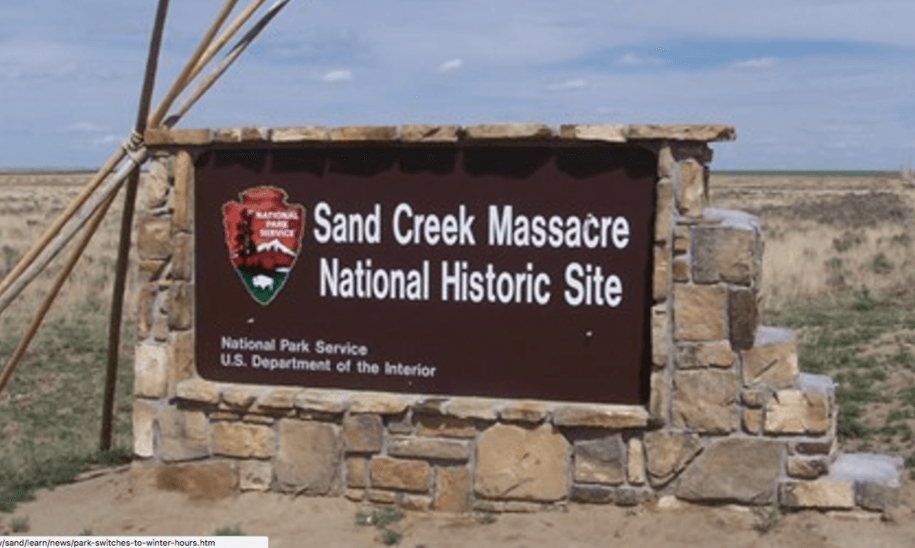
Site in Sand Creek, Colorado, marks massacre of more than 230 Native Americans by US soldiers in 1864.
US Expands Site Marking Military’s Massacre of Native American
Al Jazeera
(October 5, 2022) — The United States government has said it will expand the size of a historical site memorialising the massacre of more than 230 Native Americans in Sand Creek, Colorado by US soldiers in the 1860s.
In a ceremony on Wednesday, US Secretary of the Interior Deb Haaland announced that the Sand Creek Massacre National Historic Site would acquire nearly 1,400 hectares (3,500 acres) of additional land.
“We will never forget the hundreds of lives that were brutally taken here — men, women and children murdered in an unprovoked attack,” said Haaland, the first Native American to lead a US cabinet agency.
“Stories like the Sand Creek Massacre are not easy to tell but it is my duty — our duty — to ensure that they are told. This story is part of America’s story.”
The announcement comes amid continuing discussions of the legacy of racism, violence, and historical memory in the US, as well as a push by Haaland to take action on issues of importance to Native Americans.
The massacre took place in November 1864, when US soldiers attacked an encampment of about 750 Native Americans in what is today southeast Colorado.
More than half of the more than 230 Native Americans killed in the attack were women and children, and some US soldiers reportedly took the body parts of victims as trophies.
The location of the massacre was established as a historical site in 2007, and the land is considered sacred by Northern and Southern Cheyenne and Arapaho Tribes.
In the solemn event held to announce the expansion, Haaland was joined by representatives from the Northern Arapaho Tribe, the Northern Cheyenne Tribe, the Cheyenne and Arapaho Tribes, as well as Colorado Senators John Hickenlooper and Michael Bennett.
The Department of the Interior has said that the expansion would “increase public opportunities to experience and interpret the site’s stories and history”. Janet Frederick, the site’s superintendent, also noted that the area has “significant archaeological remains” related to the massacre.
The expansion is the most recent attempt to reckon with the legacy of the attack. Senator Hickenlooper, previously Colorado’s governor, issued an apology on behalf of the state in 2014 on the 150-year anniversary of the killings.
Max Bear, a tribal historic preservation officer for the Cheyenne and Arapaho Tribes of Oklahoma, welcomed efforts to preserve the history and provide an honest accounting of the violence and dispossession the US enacted on Native Americans.
“We don’t want our children and grandchildren to fight an uphill battle to know what happened to our folks,” The Associated Press quoted Bear as saying. “In this time of book banning, I think it’s more important than ever that our history be told correctly.”
Haaland’s ascension to the head of the Department was hailed as a historic first, and during her tenure, the agency released a report documenting the history of Native American boarding schools that the US used to erase Native American identity and culture. The US announced in May that at least 53 burial sites had been found at boarding schools.
Similar tragedies took place in Canada, which has also taken steps to address its history of violence against Indigenous people, although advocates maintain that much work remains.
Visiting Canada in July, Pope Francis apologised for the “evil” of Canada’s Catholic residential schools, where Indigenous people were forcibly assimilated in what the pope described as a “genocide” of native culture.
Posted in accordance with Title 17, Section 107, US Code, for noncommercial, educational purposes.